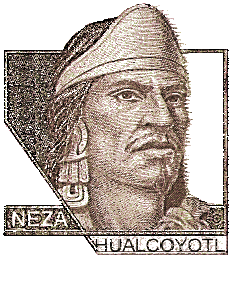I need a way to add tags to a document that will apply to all annotations in a particular document (except where explicitly canceled).
The problem is that I often want to query all annotations related to a specific document, collection of documents, or type of activity.
Type of activity requires further explanation: Given a document or collection of documents I may annotate the document for different reasons at different times.
For example, while annotating the reading materials, video transcripts, and related documents for the CopyrightX course there are certain types of annotations that may be "bundled together" so that when I search for those things later I can easily narrow my searches to just that subset of annotations; but at the same time I need a way to globally group things together.
While reading judicial opinions the first activity/mode of interaction with a particular document may be to identify the structure of the judicial opinion (the document attached to this annotation describes the parts of the judicial opinion I might want to identify: *caption, case citation, author, facts of the case, law of the case, disposition, concurring and/or dissenting opinions, etc).
The above-described mode I may use for multiple documents in one session related to the course syllabus for the week.
To connect each of these documents together I might add the tags: copyx (my shorthand for the name of the course, CopyrightX), week 1 (how far into the course syllabus), foundations (the subject matter in the syllabus which may span week 1, week 2, etc), judicial opinions (the specific topic I am focused on learning at the moment (may or may not be related to the syllabus).
Later on another day I might update my existing annotations or add new ones when I am preparing to study for an exam. I might add tags like to study, on midterm, on final to mark areas I need to review.
After the exam I might add more tags based on my test score, especially focusing on areas that received a poor score so I can study that section more or, if I missed some sections so didn't study and it resulted in a poor score in that area, add tags to study for later if necessary.
I have many more examples and modes of interaction in mind that I can explain more later, but it all hinges on a rich and flexible tagging system that:
- allows tagging a document once in a way that applies to all annotations in a document
- allows tagging a session once in a way that applies to all annotations in all documents connected to a particular session
- allows tagging a session and/or a document that bundles together new tags added to an annotation (e.g. tags for grammar/spelling, tags for rhetological fallacy classification, etc)
- fast keyboard-based selection of content
- batch selection of annotation areas with incremental filling-- I may want to simply select all the parts of a document to annotate first and then increment through each of those placeholders to fill in tags and commentary
- Mark multiple sections of the document at once to combine into a single annotation
- Excerpting only parts of a text selection, but still carry the surrounding textual context with the excerpt to easily expose the surrounding context when necessary
- A summary view of a document that is the result of remixing parts of the original document with both clarifications or self-containing summary re-writes and/or commentary from the reader
- structural tagging vs content tagging





 Generally, a pretty cool book about new media, even though it's old enough to start making college visits.
Generally, a pretty cool book about new media, even though it's old enough to start making college visits.
 Dirnt (born Michael Pritchard) was the son of a heroin-addicted mother. A Native American woman and her white husband adopted Dirnt, but they divorced when he was an adolescent. At that time, Dirnt returned to his birth mother, then left home at age fifteen, renting a room from the family of a school friend—Billie Joe Armstrong. (The friendship had solidified around the time of the death of Armstrong's father, when Billie Joe was about ten years old.) Dirnt and Armstrong eventually moved out on their own, inhabiting various basements throughout Berkeley, California, and frequenting a club called the Gilman Street Project.Armstrong and Dirnt hired Jeff Kiftmeyer as the new drummer and began touring. Upon their return to California in 1990, Gilman Street Project regular Tré Cool replaced Kiftmeyer as the drummer. This combination turned into the formula for Green Day's success as the band tried to bring punk rock into the mainstream.This trio of tattooed, pierced, and dyed-hair 22-year-olds emerged in 1994 as one of the hottest commodities in the entertainment business and ushered in punk as the heir apparent to grunge in rock and roll's quirky evolution. For all their efforts, the band has helped make punk mainstream and opened the gates for other punk bands including former Lookout! labelmates, the Offspring and Rancid.
Dirnt (born Michael Pritchard) was the son of a heroin-addicted mother. A Native American woman and her white husband adopted Dirnt, but they divorced when he was an adolescent. At that time, Dirnt returned to his birth mother, then left home at age fifteen, renting a room from the family of a school friend—Billie Joe Armstrong. (The friendship had solidified around the time of the death of Armstrong's father, when Billie Joe was about ten years old.) Dirnt and Armstrong eventually moved out on their own, inhabiting various basements throughout Berkeley, California, and frequenting a club called the Gilman Street Project.Armstrong and Dirnt hired Jeff Kiftmeyer as the new drummer and began touring. Upon their return to California in 1990, Gilman Street Project regular Tré Cool replaced Kiftmeyer as the drummer. This combination turned into the formula for Green Day's success as the band tried to bring punk rock into the mainstream.This trio of tattooed, pierced, and dyed-hair 22-year-olds emerged in 1994 as one of the hottest commodities in the entertainment business and ushered in punk as the heir apparent to grunge in rock and roll's quirky evolution. For all their efforts, the band has helped make punk mainstream and opened the gates for other punk bands including former Lookout! labelmates, the Offspring and Rancid.





